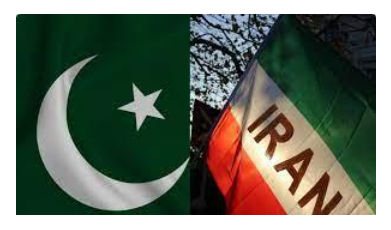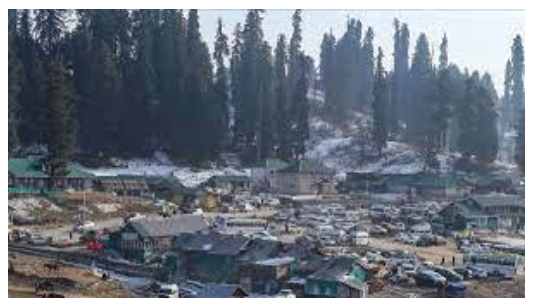Tuesday, 23rd January 2024
Iran, Pakistan, and the Baloch Militancy
In News: The Iran-Pakistan relationship has deteriorated due to Iranian missiles and drones targeting alleged Jaish al-Adl (JAA) bases in Pakistan's Balochistan.
Jaish al-Adl: A Sunni Militant Group
- Background and Objectives
- Emerged in 2012 as an offshoot of Jundullah.
- Comprised mainly of Baluch community members.
- Advocates for Baluch rights and independence in Iran's Sistan and Pakistan's Baluchistan provinces.
- Geopolitical Tensions
- Source of tension between Iran and Pakistan.
- Accusations of supporting militant activities on both sides.
Pakistan-Iran Relationship Dynamics: A Historical Overview
- Pre-1979 Alliance
- Allied to the United States and part of CENTO.
- Iran supported Pakistan in wars against India.
- Post-1979 Shift
- Rise of conservative Shiite regime in Iran.
- Pakistan's Islamization under General Zia-ul-Haq.
- Shift from allies to opposing ends of the sectarian divide.
- Geopolitical Differences
- Iran's distrust due to Pakistan's close ties with the U.S.
- Iran's foreign policy focus on exporting the revolution.
- Differences in the approach towards Afghanistan.
- Attempts at Reconciliation
- Historical attempts to improve ties.
- Relations soured after General Pervez Musharraf took power in 1999.
Balochistan Dynamics: Iran and Pakistan
- Geographical and Demographic Context
- Baluch inhabit both sides of the Iran-Pakistan border.
- Strong ties based on shared cultural, ethnic, and historical connections.
- Marginalization and Grievances
- Baluch face political and economic challenges in both countries.
- Economic disparities despite rich natural resources.
- Nationalist Movements
- Historical roots of Baloch nationalism.
- Separatist movements seeking "Greater Balochistan."
- Insurgency and Cross-Border Movements
- Baloch insurgents operate on both sides of the border.
- Involvement of groups like the Baloch Liberation Army.
Implications of Escalating Tensions: Pakistan-Iran
- Regional Stability
- Potential for regional instability.
- Impact on diplomatic, economic, and cultural ties.
- Proxy Dynamics
- Accusations of supporting proxies in regional conflicts.
- Heightened proxy dynamics in ongoing conflicts.
- Impact on Balochistan
- Increased unrest and momentum for nationalist movements.
- Involvement of other regional actors may complicate the situation.
- Security Concerns
- Raise security concerns for neighboring countries, particularly Afghanistan.
- Heighten existing security challenges in the region.
- Implications for India
- Impact on India's relations with Iran, especially concerning projects like the Chabahar port.
- Balancing ties with Iran and the United States.
India’s Stance on the Pakistan-Iran Faceoff
- Zero Tolerance Towards Terrorism
- India's consistent stance against terrorism.
- Emphasis on zero tolerance.
- Understanding Actions in Self-Defense
- Recognition and understanding of actions taken in self-defense.
- Acknowledgment of complex security dynamics in the region.
Conclusion: Navigating Complex Geopolitical Landscape
- Multifaceted Implications
- Extends beyond bilateral relations.
- Potential impact on regional stability, security, and geopolitics.
- Call for Diplomatic Efforts
- Emphasizes the importance of diplomatic efforts.
- De-escalation measures crucial to mitigate risks.
- Role of International Forums
- Suggests raising the terrorism issue at international forums.
- Presenting evidence of Pakistan's involvement in supporting militant groups.
|
UPSC Previous Year Questions Prelims (2017) Q. What is the importance of developing Chabahar Port by India? (a) India’s trade with African countries will enormously increase. (b) India’s relations with oil-producing Arab countries will be strengthened. (c) India will not depend on Pakistan for access to Afghanistan and Central Asia. (d) Pakistan will facilitate and protect the installation of a gas pipeline between Iraq and India. Ans: (c) Mains (2018) Q. In what ways would the ongoing U.S-Iran Nuclear Pact Controversy affect the national interest of India? How should India respond to this situation? Mains (2017) Q. The question of India’s Energy Security constitutes the most important part of India’s economic progress. Analyse India’s energy policy cooperation with West Asian countries. |
Source: IE
Challenges to India’s Cyber Security
In News: The Ministry of Corporate Affairs has resolved a critical vulnerability, reported by a cybersecurity expert, exposing personal details of VVIPs.
CERT-In: Safeguarding Cyber Security in India
- Overview
- CERT-In, the national nodal agency, manages cybersecurity threats under the Ministry of Electronics and Information Technology.
- Operational since January 2004.
- Functions of CERT-In
- Designated by the IT Amendment Act 2008.
- Key functions include collection, analysis, and dissemination of information on cyber incidents.
- Provides forecast, alerts, and emergency measures for handling cybersecurity incidents.
- Coordinates response activities and issues guidelines, advisories, and vulnerability notes.
- Plays a crucial role in safeguarding critical information infrastructure.
- Importance for India
- Protects critical information infrastructure and digital assets from cyber-attacks.
- Enhances cyber resilience across sectors, including government, defense, banking, and telecom.
- Contributes to national security and economic development by promoting a safe and secure cyber environment.
Challenges to India’s Cybersecurity
- Critical Infrastructure Vulnerability
- Power grids, transportation systems, and communication networks are vulnerable to cyber-attacks.
- The attempted cyber attack on the Kudankulam Nuclear power plant in October 2019 highlights risks to critical infrastructure.
- Financial Sector Threats
- High-risk cyberattacks targeting banks, financial institutions, and online payment systems.
- Instances like the City Union Bank’s SWIFT system attack in March 2020 can result in financial losses and identity theft.
- Data Breaches and Privacy Concerns
- Increased storage of personal and government data online raises the risk of data breaches.
- Incidents like the leak of Common Admission Test (CAT) data in May 2021 pose severe consequences for privacy and security.
- Cyber Espionage
- India is a target for cyber espionage activities aiming to steal confidential information.
- Examples include Operation SideCopy in 2020 targeting Indian military and diplomatic personnel.
- Advanced Persistent Threats (APTs)
- Sophisticated and prolonged cyber attacks pose a challenge.
- The targeting of India's power sector by a China-linked APT group in February 2021 underscores the severity of this threat.
- Supply Chain Vulnerabilities
- Weaknesses in software or hardware components create supply chain vulnerabilities.
- The global cyberattack on SolarWinds in December 2020 affected Indian organizations, including the National Informatics Centre (NIC).
Way Forward: Enhancing Cybersecurity in India
- Legal Framework and Legislation
- The Information Technology (IT) Act of 2000 governs cyber crimes.
- Gaps and limitations include unclear definitions, procedures, and penalties.
- Need for comprehensive and updated laws covering cyber terrorism, cyber warfare, espionage, and fraud.
- Initiatives and Policies
- India has various initiatives and policies to improve cybersecurity.
- Includes the National Cyber Security Policy, Cyber Cells, Cybercrime Investigation Units, Reporting Platforms, and Capacity Building and Training programs.
|
UPSC Previous Year Questions Prelims (2017) Q. In India, it is legally mandatory for which of the following to report on cyber security incidents?
Select the correct answer using the code given below: (a) 1 only Ans: (d) Exp:
|
Source: TH
Davos Meeting 2024
In News: The annual meeting of the World Economic Forum (WEF) for this year took place from January 15 to January 19.

World Economic Forum: Overview
- Foundation and Purpose
- Founded in January 1971 by Klaus Schwab.
- International non-governmental organization for Public-Private Cooperation.
- Engages global leaders to shape agendas but lacks independent decision-making power.
- Headquarters and Annual Meeting
- Headquarters: Cologny-Geneva, Switzerland.
- Annual meeting held in Davos, Switzerland, known as the Davos Agenda.
- Objective: Orient global leaders on imperatives for the year ahead.
- WEF Annual Reports
- Produces various annual reports, including:
- Global Competitiveness Report
- Global Information Technology Report
- Global Gender Gap Report
- Global Risks Report
- Global Travel and Tourism Report
- Global Enabling Trade Report.
Key Takeaways from Davos Meeting 2024
- Artificial Intelligence
- Central theme of the meeting.
- Discussions on transformative abilities and potential threats.
- Concerns about regulation, job losses, misinformation, and inequality.
- Consensus: Positives outweigh negatives, with no major threat to human intelligence.
- War and Uncertainty
- Highlighted risks from geopolitical situations, wars, threats to global supply chains, and food security uncertainty.
- Estimated $15 billion needed for Gaza reconstruction, contingent on lasting peace.
- Climate
- Emphasized the need for businesses to adapt to climate change.
- Call for global unity on climate action despite differences.
- Highlighted the necessity for developed countries to assist in financing climate action in developing nations.
- China’s Economy
- China sought Western investment amid a slowing economy.
- GDP growth at 5.2% in 2023, below pre-pandemic levels.
- Battling efforts to isolate in the semiconductor trade standoff.
- India-Specific Observations
- McKinsey assessment: India transforming rapidly as a major economy.
- Focus on technology, talent, healthcare, and other areas.
- Launch of Global Good Alliance for Gender Equity and Equality.
- Aim: Bring global best practices, knowledge sharing, and investments in women's health, education, and enterprise.
- Supported by Bill and Melinda Gates Foundation, housed by CII Centre for Women Leadership.
- WEF as a 'Network Partner,' Invest India as an 'Institutional Partner.'
Source: PIB
Indian Delegation Explores Copper Mining Opportunities in Zambia
In News: The Ministry of Mines has suggested dispatching a delegation from the Indian industry to copper-abundant Zambia for deliberations on potential copper exploration and mining ventures in the African nation.
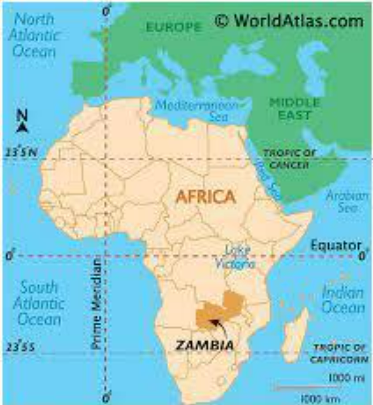
Copper Mining: An Overview
- Introduction to Copper
- A chemical element with a distinctive reddish-brown color.
- Excellent conductor of electricity and heat.
- Found in various ores in the Earth's crust, including chalcopyrite, bornite, chalcocite, and malachite.
- Mining Stages and Methods
- Involves multiple stages, from discovery to extraction and processing.
- Various mining methods based on factors like deposit depth, ore type, and economic considerations.
- Open-Pit Mining
- Used for shallow deposits.
- Large pits excavated for surface ore extraction.
- Accounts for 80% of global copper mining operations.
- Underground Mining
- Employed for deeper deposits.
- Involves digging shafts or tunnels to reach ore underground.
- Global Copper Production
- Chile leads global copper production with 27% share.
- Peru follows as the second-largest producer, contributing 10% to global production.
Applications of Copper
- Electrical Conductors
- Widely used in electrical wiring and components due to high conductivity.
- Piping and Tubing
- Commonly utilized in plumbing for pipes and tubing.
- Alloys
- Alloyed with metals like zinc and tin to create brass and bronze with diverse industrial and artistic applications.
- Electronics
- Utilized in electronic devices, printed circuit boards, and other components.
- Roofing and Architecture
- Used in roofing materials and architectural applications for corrosion resistance and aesthetic appeal.
Copper Mining in India
- Overview
- Approximately 700 copper mines globally, with 127 in India.
- Copper Reserves and Production in India
- India has low copper reserves and production.
- Low-grade copper ore (less than 1% metal content) compared to the global average of 2.5%.
- Leading producer: Madhya Pradesh (53% of Indian copper production).
- Rajasthan contributes 43%, while Jharkhand accounts for 4%.
Source: IE
Havisure Vaccine
In News: Indian Immunologicals Ltd (IIL), a wholly-owned subsidiary of the National Dairy Development Board (NDDB), has introduced 'Havisure,' India's first indigenous Hepatitis A vaccine, in Hyderabad.
Havisure Vaccine: A Brief Overview
- Vaccine Details
- Two-dose vaccine regimen.
- Initial dose administered above 12 months, with the second dose given at least six months later.
- Recommended for routine childhood immunization and individuals at risk or traveling to regions with high hepatitis A prevalence.
- People with occupational risk or chronic liver diseases also advised to undergo Hepatitis A vaccination.
Key Facts About Hepatitis A
- Definition and Causes
- Inflammation of the liver caused by the hepatitis A virus (HAV).
- Primarily transmitted through contaminated food or water with the feces of an infected person.
- Types of Hepatitis
- Acute (short-term) and chronic (long-term) infections.
- Various causes, including viral hepatitis (A, B, C, D, E), alcoholic hepatitis, toxic hepatitis, and autoimmune hepatitis.
- Transmission and Spread
- Viral hepatitis spreads through different routes, including blood contact.
- Hepatitis B, C, and D may also transmit through other body fluids, such as sharing needles or unprotected sex.
- Symptoms
- Some infected individuals may not exhibit symptoms.
- Common symptoms include fever, malaise, loss of appetite, diarrhea, nausea, abdominal discomfort, dark-colored urine, and jaundice.
- Treatment
- No specific treatment for hepatitis A.
- Recovery from infection symptoms may be gradual, taking weeks or months.
Source: DH
Arogya Maitri Disaster Management Cube
In News: The deployment of the Arogya Maitri Disaster Management Cube in Ayodhya aims to enhance medical preparedness and response capabilities for the upcoming 'Pran Pratishtha' ceremony.
Arogya Maitri Cube: Revolutionizing Mobile Hospitals
- Overview
- Integral part of "Project BHISHM" – Bharat Health Initiative for Sahyog, Hita, and Maitri.
- A cutting-edge mobile hospital designed for rapid response and comprehensive care.
Features
- Capacity and Rapid Deployment
- Tailored for up to 200 casualties.
- Remarkable ability to deploy within 12 minutes in mass casualty incidents.
- Innovative Tools
- Equipped with innovative tools for enhanced disaster response and medical support during emergencies
- Technological Integration
- Integrates Artificial Intelligence (AI) and data analytics.
- Facilitates effective coordination, real-time monitoring, and efficient management of medical services.
- Portability and Flexibility
- Consists of 72 easily transportable components
- Can be carried by hand, cycle, or drone, ensuring unmatched flexibility.
- Robust Design
- Robust, waterproof, and lightweight.
- Ideal for various emergency scenarios, from airdrops to ground transportation
- Advanced Medical Equipment
- Equipped with advanced medical equipment.
- RFID-tagged for efficient repacking and redeployment.
- BHISHM Software System
- State-of-the-art BHISHM software system integrated into a provided tablet.
- Enables quick item location, usage and expiry monitoring, and readiness for subsequent deployments.
Source: PIB
Great Indian Bustard Conservation
In News: The Supreme Court has issued a directive to the Centre, urging transparency regarding its strategies to conserve the critically endangered Great Indian Bustard.
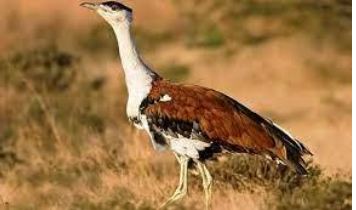
Great Indian Bustard: Overview
- Scientific Information
- Scientific Name: Ardeotis nigriceps
- Among the heaviest flying birds.
- Distribution and Population
- Current viable population: 100-150 individuals in India.
- Mainly found in the Thar Desert of Rajasthan, hosting approximately 100 individuals.
- Habitat
- Inhabits dry grasslands and scrublands.
Distinctive Features
- Size and Appearance
- Among the largest flying birds.
- Horizontal body, long bare legs, resembling an ostrich.
- Males and females are roughly the same size.
- Largest individuals weigh up to 15 kg (33 pounds).
- Coloration
- Distinguished by a black crown on the forehead.
- Pale neck and head.
- Brownish body with wings marked in black, brown, and grey.
- Breeding and Lifespan
- Breeds during the monsoon season.
- Females lay a single egg on open ground.
- Lifespan: 12-15 years.
- Feeding Habits
- Opportunist eaters.
- Diet varies with seasonal food availability.
- Feed on grass seeds, insects (grasshoppers, beetles), and occasionally small rodents and reptiles.
Conservation Status
- IUCN Red List: Critically Endangered.
- Wildlife (Protection) Act, 1972: Schedule 1.
- CITES: Appendix 1.
Source: TH
Skink
In News: The researchers have christened the newly discovered genus as 'Dravidoseps,' a fusion of the Sanskrit terms 'Dravid' and 'Seps.'

Skink: An Overview
- Family and Common Name
- Belongs to the family Scincidae.
- Commonly known as skinks.
- Physical Characteristics
- Typically smooth, shiny skin.
- Often possesses small or rudimentary legs.
- An ancient reptile species dating back to the time of dinosaurs.
- Behavior and Foraging
- Primarily ground dwellers or burrowers.
- Highly alert, agile, and fast-moving.
- Actively forage for various insects and small invertebrates.
- Habitat and Adaptability
- Occupy diverse habitats from deserts to rainforests.
- Known for exceptional camouflage abilities.
- Can blend seamlessly with their surroundings.
- Global Distribution
- Represented worldwide but especially diverse in:
- Southeast Asia and its associated islands.
- Deserts of Australia.
- Temperate regions of North America.
Source: DH
The Bureau of Police Research and Development (BPRD)
In News: The Bureau of Police Research and Development (BPRD) has issued a caution to users about various scams conducted through the messaging platform WhatsApp.
Bureau of Police Research and Development (BPR&D): An Overview
- Establishment and Evolution
- Inaugurated in 1970 under the Ministry of Home Affairs.
- Replaced the Police Research and Advisory Council.
- Objectives
- Needs Identification
- Identify the needs and challenges faced by the police in the country.
- Research and Studies
- Undertake research projects and studies.
- Propose solutions to overcome challenges and fulfill police requirements.
- Technology Adoption
- Keep abreast of developments in science and technology.
- Promote the use of appropriate technology in police work.
- Modernization Assistance
- Assist states in modernizing State Police Forces and Correctional Administration.
- Initial Divisions
- Established with two divisions: Research, Statistics & Publication, and Development.
- Added a Training Division in 1973 based on Gore-Committee recommendations.
- National Police Mission
- Entrusted with anchoring and coordinating the National Police Mission.
Source: TH
Parambikulam Tiger Reserve
In News: A recent survey of fauna at the Parambikulam Tiger Reserve has contributed 11 new species records to its database, comprising three birds, four butterflies, and four odonates.
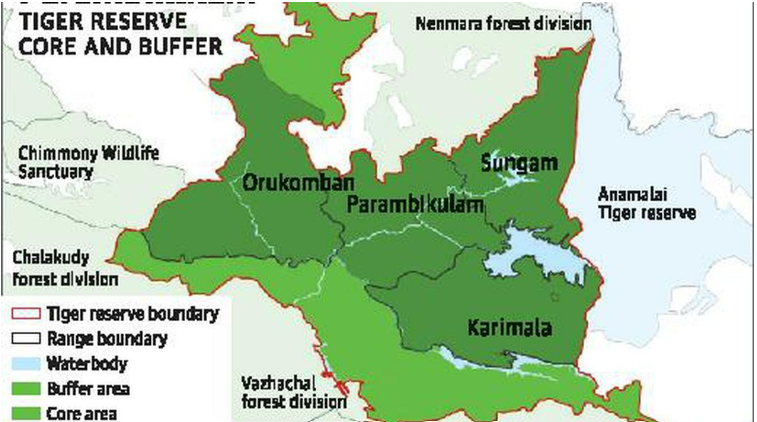
Parambikulam Tiger Reserve: Overview
- Location
- Situated in the Nelliampathy–Anamalai landscape of the Western Ghats in Palakkad and Thrissur districts, Kerala.
- Tiger Reserve Declaration
- Designated as a Tiger Reserve in 2009.
- Encompasses a total area of 643.66 sq km.
- Vegetation
- Diverse habitat types: evergreen, semievergreen, moist deciduous, dry deciduous, shola forests.
- Unique habitats like montane and marshy grasslands, locally known as 'vayals.'
- Flora
- Presence of teak, rosewood, sandalwood, and neem trees.
- Hosts the world’s first scientifically managed teak plantation.
- Home to the world’s oldest and tallest teak tree, 'Kannimara,' aged 450 years and standing at 40 meters.
- Fauna
- Common animals include Leopard, Elephant, Gaur, Spotted Deer, Sambar, Barkingdeer, Common Langur, Nilgiri Langur, Malabar giant squirrel, Sloth Bear, and Wild dog.
- Nilgiri Tahr, the only South Indian wild goat, found on high-altitude rocky hills and grasslands.
- Habitat for rare small animals like Tarantula (large-bodied spiders).
Source: TH
Post Office Act, 2023: Overhauling Colonial-Era Legislation
In News: A recent article explores the Parliament's recent approval of the Post Office Act, 2023, replacing the colonial-era Indian Post Office Act, 1898
Key Highlights of the Post Office Act, 2023
- Director General of Postal Services
- The Act grants authority to the Director General of Postal Services for regulating additional services and fixing charges without parliamentary approval.
- Interception of Shipments
- Empowers the Central Government to intercept, open, or detain postal items in the interest of security, public order, or preventing contraventions.
- Identifiers and Post Codes
- Introduces digital addressing standards, replacing physical addresses with precise geographical coordinates.
- Removal of Offences and Penalties
- Omits penalties for theft or destruction of postal articles by a Post Office officer, creating potential legal gaps.
- Penalty under Section 7
- Specifies liability for charges related to Post Office services and outlines the recovery process.
- Removes Centre’s Exclusivity
- Eliminates the exclusive privilege of the Centre for conveying all letters by post, allowing private courier services to operate more freely.
Deficiencies in the Post Office Act, 2023
- Regulation of Postal Services different from Courier Services
- Maintains distinct frameworks for regulating public and private postal services, leading to disparities.
- Lack of Procedural Safeguards Violates Fundamental Rights
- Fails to specify procedural safeguards for intercepting postal articles, potentially infringing on privacy and freedom of speech.
- The Ground of ‘Emergency’ is Beyond the Reasonable Restrictions
- The term 'emergency' lacks clear definition, potentially providing broad grounds for interception, raising constitutional concerns.
- Exemption from Liability for Lapses in Services
- Lacks a framework for addressing lapses in postal services, contrasting with the accountability established for the Railway sector.
- Removal of all Offenses and Penalties
- Eliminates consequences for illegal opening of postal articles, potentially impacting individuals' right to privacy.
- Lack of Clarity on Consequences in Certain Cases
- Fails to specify consequences for officers involved in fraudulent or wilful actions, leaving potential legal ambiguities.
Way Forward for the Post Office Act, 2023
- Incorporate Robust Procedural Safeguards
- Introduce oversight mechanisms, judicial warrants, and adherence to constitutional principles for intercepting articles.
- Define the Grounds for Interception
- Clearly define and refine grounds for interception, especially the term 'emergency,' aligning with constitutional reasonable restrictions.
- Balanced Liability Framework
- Establish clear rules for accountability without compromising the Post Office's independence, preventing misuse of interception powers.
- Addressing Unauthorized Opening
- Reintroduce specific offenses and penalties for unauthorized opening of postal articles, holding individuals accountable.
Conclusion
Emphasizes the need for legislative amendments to strike a balance between security imperatives and individual rights, urging proactive steps to address constitutional challenges.
|
UPSC Previous Year Questions Prelims (2016) Q. ‘Right to Privacy’ is protected under which Article of the Constitution of India? (a) Article 15 Ans: (c) |
Source: TH
Share the article
Edukemy’s Current Affairs Quiz is published with multiple choice questions for UPSC exams
MCQ
Get Latest Updates on Offers, Event dates, and free Mentorship sessions.

Get in touch with our Expert Academic Counsellors 👋
FAQs
UPSC Daily Current Affairs focuses on learning current events on a daily basis. An aspirant needs to study regular and updated information about current events, news, and relevant topics that are important for UPSC aspirants. It covers national and international affairs, government policies, socio-economic issues, science and technology advancements, and more.
UPSC Daily Current Affairs provides aspirants with a concise and comprehensive overview of the latest happenings and developments across various fields. It helps aspirants stay updated with current affairs and provides them with valuable insights and analysis, which are essential for answering questions in the UPSC examinations. It enhances their knowledge, analytical skills, and ability to connect current affairs with the UPSC syllabus.
UPSC Daily Current Affairs covers a wide range of topics, including politics, economics, science and technology, environment, social issues, governance, international relations, and more. It offers news summaries, in-depth analyses, editorials, opinion pieces, and relevant study materials. It also provides practice questions and quizzes to help aspirants test their understanding of current affairs.
Edukemy's UPSC Daily Current Affairs can be accessed through:
- UPSC Daily Current Affairs can be accessed through Current Affairs tab at the top of the Main Page of Edukemy.
- Edukemy Mobile app: The Daily Current Affairs can also be access through Edukemy Mobile App.
- Social media: Follow Edukemy’s official social media accounts or pages that provide UPSC Daily Current Affairs updates, including Facebook, Twitter, or Telegram channels.

